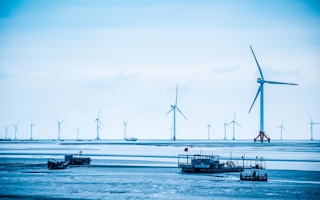Although some reports indicated that the wind power sector in China showed minimal growth in 2013, the actual situation was not so grim. Recently released statistics pointed to a recovery in the industry, with newly installed capacity rising 24 per cent year on year, the bid invitation price rising nearly 15 per cent, and the average year-on-year annual wind farm utilisation time increasing by more than 100 hours.
Newly installed capacity is expected to maintain a growth rate of 20 per cent over the next few years, as the grid connection becomes easier and the Chinese government establishes more favorable policies.
Data for 2013 show the wind power industry in China has bottomed out. Last year, the industry recorded newly installed capacity of 16.1 GW, 24 per cent more than the 13.0 GW installed in 2012 and bringing the total to 90 GW. The recovery was also reflected in the bid-invitation price for wind turbine generators, which improved to 4,000 yuan ($US 670)/KW in 2013 from a low of 3,600 yuan ($US 600)/KW in June 2011.
According to Shi Pengfei, Honorary Chairman of the Chinese Wind Energy Association, there were three main reasons for the recovery. Firstly, the Ministry of Finance has begun to pay the additional subsidies for renewable energy up front, significantly reducing the time necessary for developers to obtain the subsidies so they can be turned around and deployed.
“
Findings at the recently concluded National Energy Working Conference 2014 revealed that the country is on track to approve 14 GW of wind power projects
Secondly, the decline in the coal price vastly improved the financial positions of China’s five largest power generation groups, allowing them to allocate more investment in the renewable energy sector.
Lastly, developers have realised that they can no longer so viciously cut the bid-invitation price for wind turbine generators, as this would lead to poor quality equipment and in turn have a negative effect on their productivity. In the first half of 2013, the capacity in tender invitations totaled 8.8 GW, an increase of 100 per cent year on year.
The limitation on wind power supply saw relief last year, with the average wind farm utilisation exceeded 2,000 hours, compared with 1,900 hours in 2012, according to Shi Lishan, Deputy Head of the New and Renewable Energy Division at the National Energy Administration.
In 2014, several favorable policies will be rolled out. At the beginning of the new year, the National Energy Administration issued the Notice on Building Offshore Wind Power Projects, according to which the administration will choose several of the larger projects in several provinces this year as the ones to develop, said Shi.
In addition, the watchdog organisation will issue the long-awaited Quota Management Methods on Renewable-Energy Power, a document delineating a clear schema for the quota distribution of renewable energy for power generating companies, grid companies and provinces. This will allow all parties to deploy more wind power and PV power projects as the seek to make full use of their quotas.
Furthermore, the Ministry of Science and Technology will kick off a batch of research projects to support of the development of the wind power sector, according to Qin Haiyan, secretary general of the Chinese Wind Energy Association.
China aims to install 18 GW of wind power projects in 2014. Findings at the recently concluded National Energy Working Conference 2014 revealed that the country is on track to approve 14 GW of wind power projects (60 per cent of which will be distributed projects). In addition, the country aims to bring the price for wind and solar power in alignment with that for thermal power by 2020.










